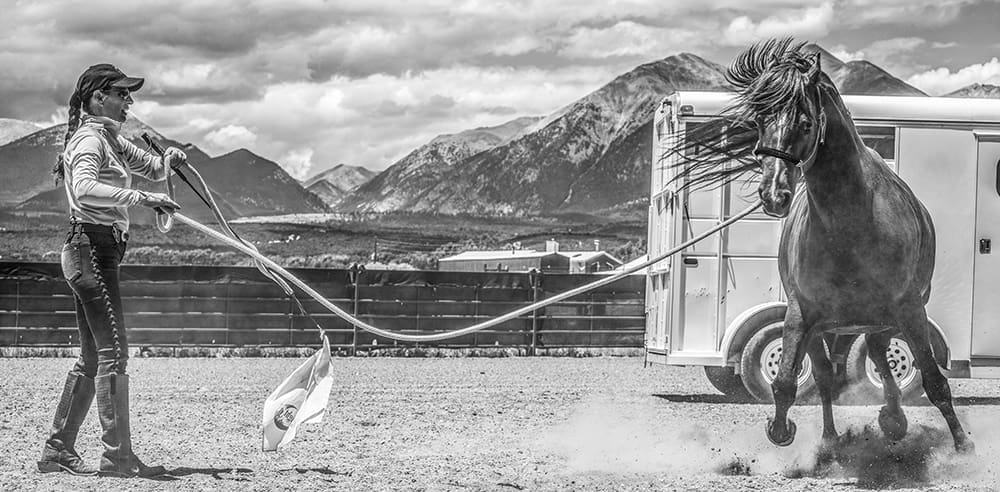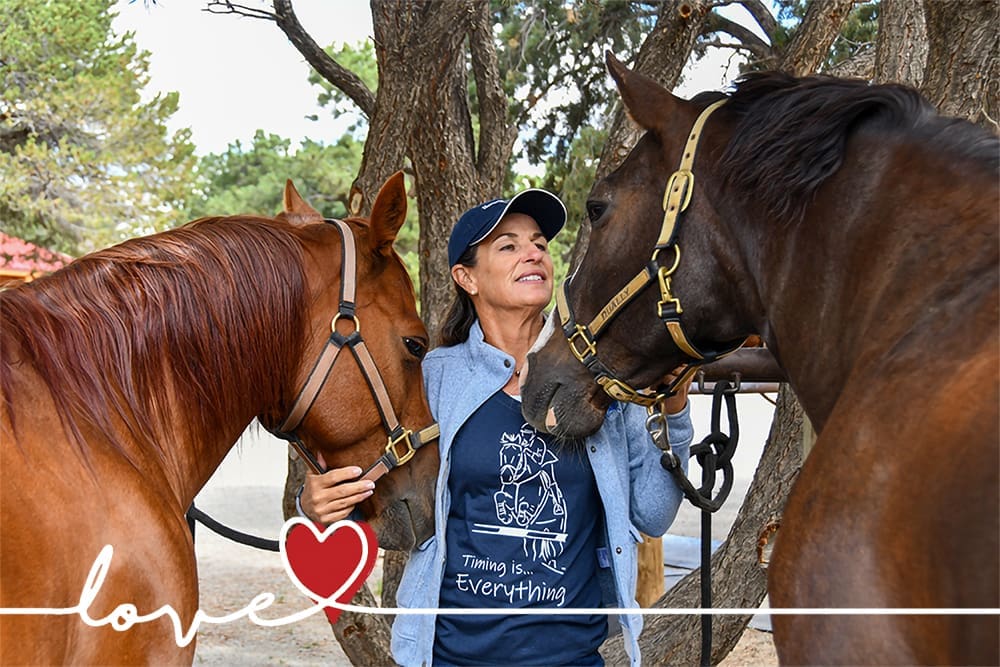Ask Julie Goodnight: Do Western Riders Need to Post the Trot?
Question: Try to settle this discussion – please! Is posting on the correct “diagonal” only important in English riding? I always thought it was about the horse’s balance in a bend….some say it’s just not a “western thing”…and will post in a western saddle, but not with any regard for the diagonal?
Sharon
Answer: Sharon, You are correct that posting on a specific diagonal pair at the trot has to do with the horse’s balance and also his work load; it doesn’t have much to do with English vs. western. Any rider that is interested in the balance and conditioning of their horse would want to know and use their diagonals correctly.
Since Western riders don’t usually post during competition, many might consider it unimportant. But when you are riding the long trot, whether English or western, it is easier for the rider to post and more comfortable for the horse too. If you are posting at the trot frequently, it is beneficial for your horse that you have awareness and understanding of which diagonal to post on.
The trot is a two-beat, diagonal gait; meaning that the feet hit the ground in diagonal pairs—the right hind and left fore hit the ground at the same time and the left hind and right fore hit together, thus creating diagonal pairs. Since the horse drives himself forward from behind, it is really the hind legs that are doing most of the work pushing into the stride and pushing the rider up and out of the saddle when she posts. Although riders commonly check which diagonal pair they are posting on by looking at the outside fore leg (“rise and fall with the leg on the wall”), it is really the hind legs that matter. There are two reasons for paying attention to which diagonal you are posting on; one has to do with turning, the other has to do with conditioning.
When you bring the horse onto a turn, the inside of the horse shortens and the outside lengthens as he bends or arcs his body in the turn. Try this little experiment yourself—walk in a tiny circle (just a few inches across) and notice that your inside leg is taking a very small step and your outside leg is reaching much farther to get around the outside of the circle. This is a magnified view of what happens when your horse trots on a turn. The inside hind leg bears more weight and the outside takes a bigger step. When you are posting on the correct diagonal for a turn, you are rising as his inside hind leg comes forward, to take a little weight off of the leg that is already bearing more weight.
The other time that your posting diagonals matter is if you are going a long distance at the trot. Even if you are going in a straight line, the beat you are sitting on is working harder than the one you are rising on (either he is lifting your weight or you are lifting it). So if you were trotting ten miles in a straight line, you would want to alternate which diagonal you posted on so that you worked both hind legs equally. For instance, you might trot for a mile on one diagonal and then switch for the next mile. This way, both the horse’s hind legs are getting an equal workout.
The rider is said to be on the correct diagonal when she rises with the outside fore leg. Although most people are accustomed to looking down at the horse’s shoulders to see which diagonal they are on, it is much better when the rider learns to feels the correct diagonal—and it’s not that hard! If you can sit the trot well, you should be able to feel a lateral movement (right-left) in your hips, in additional to the vertical movement (up and down). As you feel your hips shift right and left at the trot, what you are feeling is his hind legs—when he pushes off with his right hind, his right hip lifts and so does yours (and visa versa).
To be technically correct, you should always begin posting on the correct diagonal—not just start posting then check if you are correct by looking down. Sit the trot for a few beats, however long it takes you to feel it, and then rise into the post when you feel your outside hip lift. It will take some concentration and coordination at first, but with a lot of practice it will become second nature. Learning to feel your diagonals instead of looking will raise your horsemanship to a higher level and develop your sense of feel of how the horse moves. Eventually you will know when you are on the wrong diagonal because it will feel out of balance.
There are many skills and maneuvers that people tend to classify as either western or English. But the truth is horses are horses—their balance is the same, the way they move and the way in which the rider uses the aids for cueing are the same. The appearance of your clothes and your tack doesn’t really change that.
Good question! Thanks.
Julie
–Julie Goodnight Trainer and Clinician



